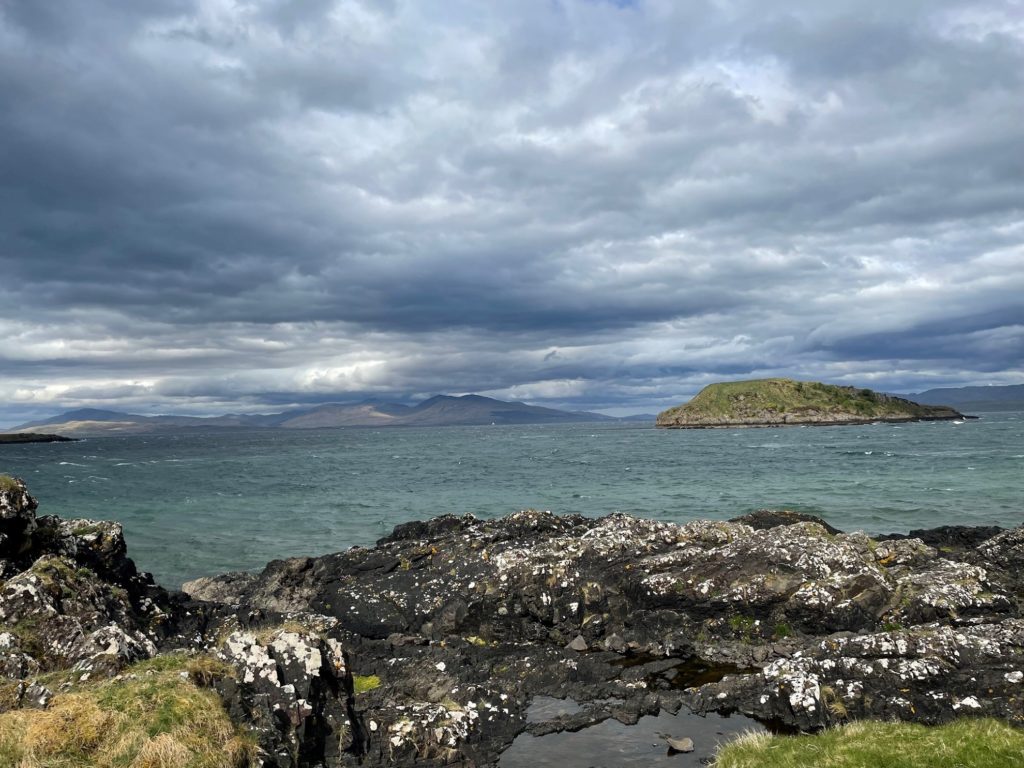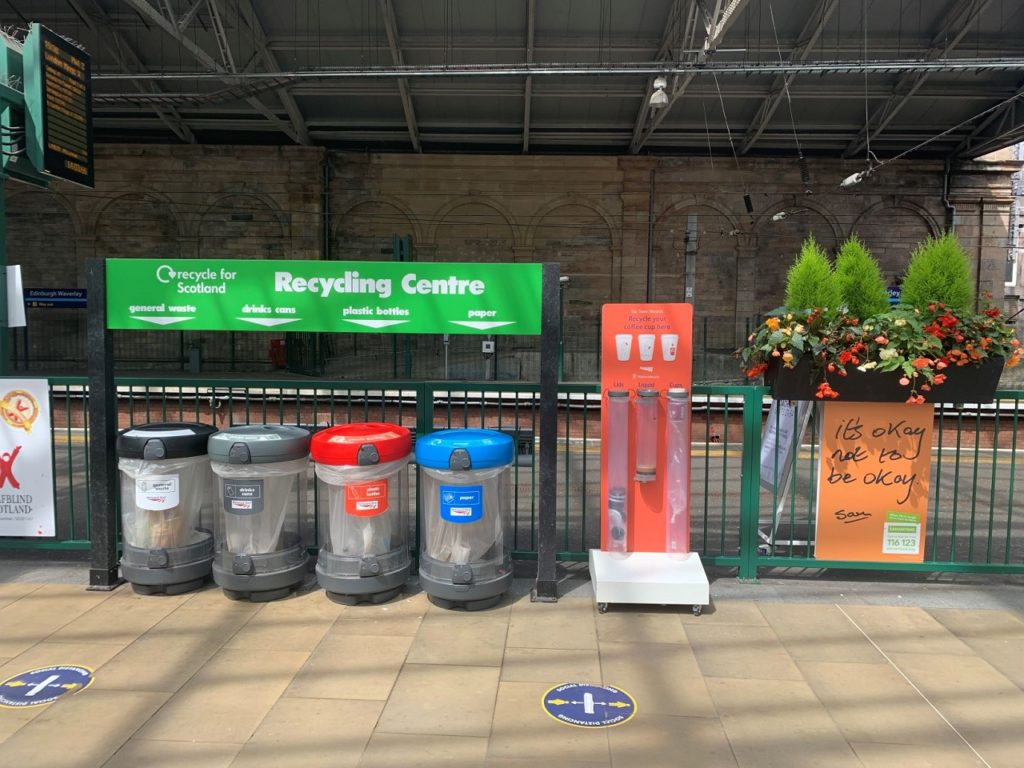Keira McLuskey, sustainability strategy manager, Scotland’s Railway

It’s a surprise to many people when I tell them that rail travel is the cleanest form of public transport in Scotland today.
Indeed, only 1.2% of greenhouse gas emissions in the sector came from rail in 2019, which is tiny when you consider the figure is 40% for road vehicles.
Making rail journeys greener
But despite the low impact, Transport Scotland, ScotRail and Network Rail Scotland are working harder than ever to make rail journeys even greener. As more passengers return to Scotland’s Railway post-lockdown we’re also readying our trains, tracks and stations for the biggest environmental event in the world this year – COP26 – which just happens to be on our own doorstep in Glasgow.
Over 40% of Scotland’s railway track is now electrified.
That means 76% of all Scottish passenger journeys and 45% of rail freight journeys are powered by electricity. But low as rail emissions are, with legally binding plans in place to implement ‘Net Zero’ by 2045 in Scotland, it’s our objective to get our small impact down to nil as fast as possible; ideally by 2035.
Developing science-based targets
Scotland’s Railway is working to develop science-based targets which use accepted climate science to plot emissions reductions – these will help us understand our pathway to net zero carbon in Scotland’s Railway and are already in place for Network Rail across the rest of the UK. And that’s not all. While the most obvious way to make passenger and rail freight journeys more environmentally friendly is replacing diesel fuel on our trains to minimise our emissions and improve air quality, there’s a much broader story to be told…
Our sustainability strategy aligns with national ambitions but also the worldwide sustainable development goals set out by the UN. We have pledged to make Scotland’s Railway much more robust to the impacts of climate change through key pillars of sustainability activity plus an enhanced focus on integrating the fundamentals of sustainable thinking into our working culture.

Promoting biodiversity, recycling and reusing materials
So, what exactly can you expect to see Scotland’s Railway doing more of and doing differently?
Promoting biodiversity on the land we own adjacent to our railway lines.
From reforestation on our new routes to caring for protected species like bats and badgers, Scotland’s Railway is ensuring the animal and plant life near our train routes is supported and enhanced. Our in-house ecologists are exploring replanting initiatives like reforestation at East Kilbride with the local community and best practice working with Nature Scot and SEPA as we upgrade the railway through the Cairngorms National Park. Techniques include seeding and planting a variety of trees, grasses and wild flowers appropriate to the rail corridor. Our short-term target, by 2024, is to have no net loss of biodiversity as a result of rail activity.
Recycling facilities at our stations and on ScotRail trains.
It seems obvious but the easier we make it for passengers to dispose of their waste responsibly on Scotland’s Railway, the more we can help control the major challenge of diverting rubbish from landfill. At the front end we want to help prevent waste in the first place by encouraging reusable items and fading out single use plastic. Our target is to embed a circular economy in our railway system by 2035 and we’re already well on the way to making zero carbon stations at Falkirk and Leven.

At a construction and operational level we reuse railway materials in ways we haven’t before
For instance, 98% of demolition waste from Queen Street Station was re-used rather than disposed, surplus materials from the East Kilbride project have been circulated for re-use elsewhere and works on the Aberdeen to Inverness line were able to re-use 35,000 tonnes of ballast (the special gravel that sits under rail track and is essential for train stability), rather than replacing it with new aggregate. We’ve also connected with Zero Waste Scotland to tap into their knowledge and experience at a local level to minimise waste, re-use and repurpose materials during the development and delivery of projects.
We make sure our supply chain is as low carbon as possible.
It is important that we hold our suppliers and contractors to the same high sustainability targets as Scotland’s Railway itself. This applies for station refurbishments where low carbon concrete will be used and there is the potential for renewables to generate the electricity that powers our trains, buildings and other assets. We also anticipate introducing a minimum commitment of 15% of the available parking spaces in new railway stations for electric vehicle charging. In design, and in terms of materials used and methods of construction adopted, we will at all stages work with our suppliers to seek ways to reduce the volume of carbon embedded in the infrastructure as well as the carbon footprint of materials used.

Working with communities to add social value
Supporting active travel networks will see us working with communities and local stakeholders to join up journeys, contributing to the development of a comprehensive low carbon travel option for passengers and freight customers that will reduce reliance on road vehicles. It will also promote safer, more active and greener ways in which local people can access the new public transport hubs and will enable freight journeys to be end-to-end net zero.
Adapting our infrastructure to climate change
The impact of severe weather on Scotland’s Railway can be devastating and it is nearly a year since the tragedy at Stonehaven where three people lost their lives on a train that derailed in extreme weather conditions. We must adapt our structures and assets to be more resilient to Scotland’s increasingly volatile climate and are heavily focused in this area already, using world-leading experts to guide us in this critical work.

Making sure we add social value to Scotland and reducing noise and nuisance for our neighbours wherever we are able
This means continuing our longstanding relationships with key charity partners and community initiatives like Samaritans, homelessness and youth groups as well as improving interaction with our lineside neighbours as Scotland’s Railway grows and is enhanced. The transition to decarbonising our railway must be a just one that respects the communities we serve and in which we operate.
Amidst a climate emergency and as a responsible business, taking action isn’t just the right thing to do, it is fundamental to our commercial success and our ability to sustain a railway that is reliable, safe and protects our precious environment.
Scotland’s Railway sustainability pages are coming soon but in the meantime links to Network Rail and ScotRail sustainability pages can be found below: